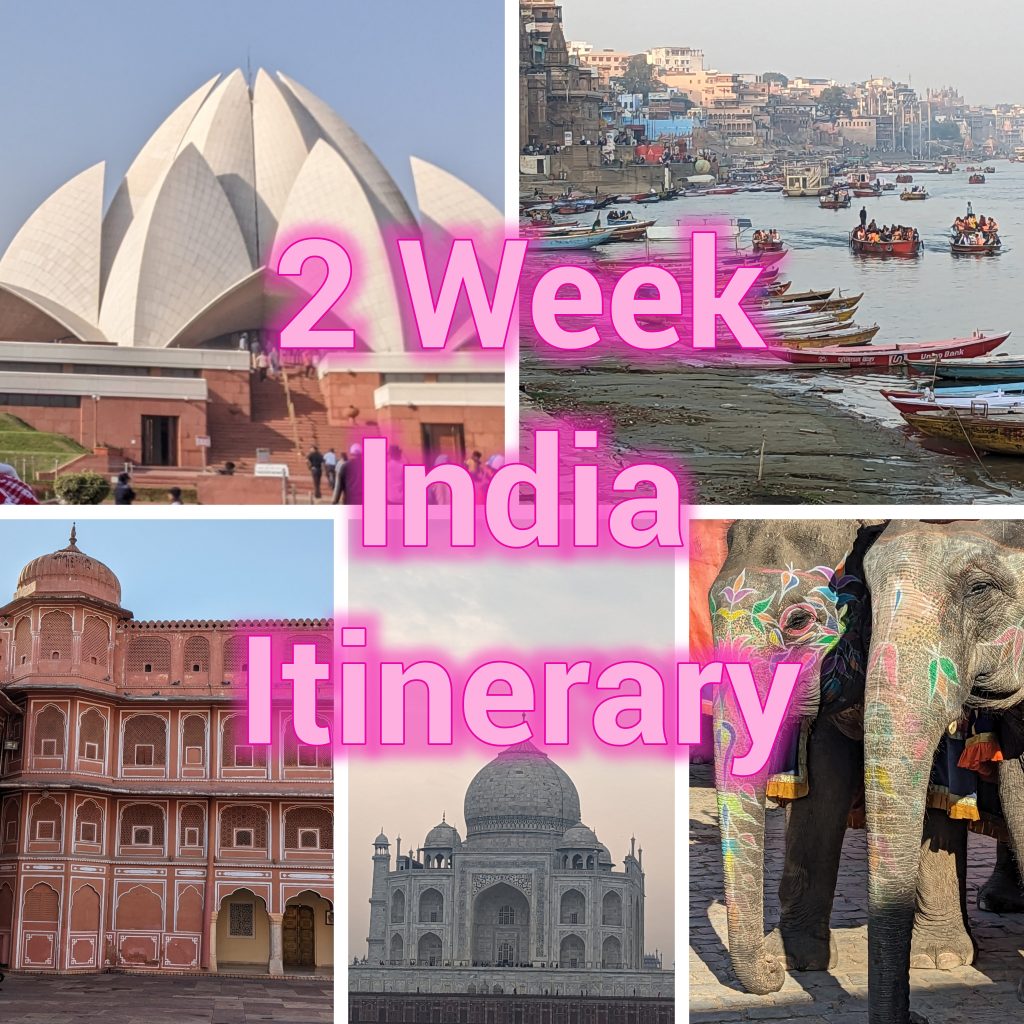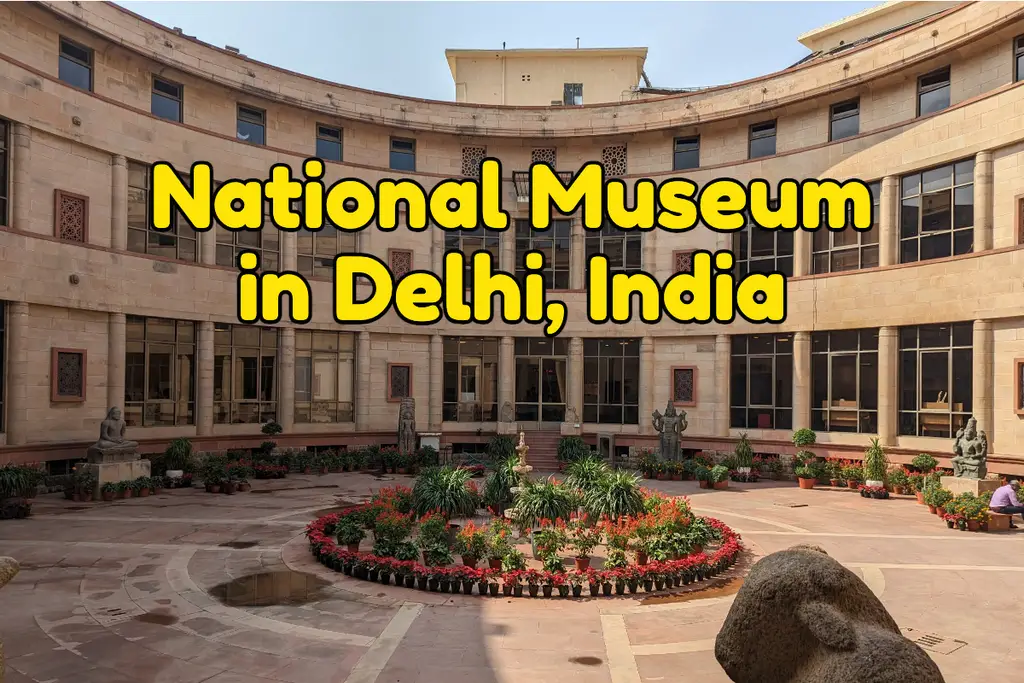
I often wonder whether super rich people didn’t exist, whether there would be anything truly interesting human-made things to see in the world. Jantar Mantar is no different in this regard. Jantar Mantar was created by Maharaja Sawai Jai Singh II who was super duper rich for his time and had a big interest in astrology. He was so rich and had such an interest in astrology that he created Janatr Mantar with many structures to help him understand the world better through astronomy and timekeeping. In fact, he had such a large interest in how astrology could be leveraged that he created Jantar Mantar in Jaipur and 4 more astrological observation areas in Delhi, Veranasi, Ujjain, and Mathura to see how his data would differ between the placement of the astrological tools of his time.
These observatories were remarkable feats of astronomical engineering during their time.
Follow our great India Trip
Location:
How to get there:
Time needed to enjoy it: 10-30 minutes
If you think that it is odd that we have these structures due to a rich persons hobby, remember that nearly every building, art piece and botanical garden is likely due to some super rich person investing in it so that it can be shared with the world.
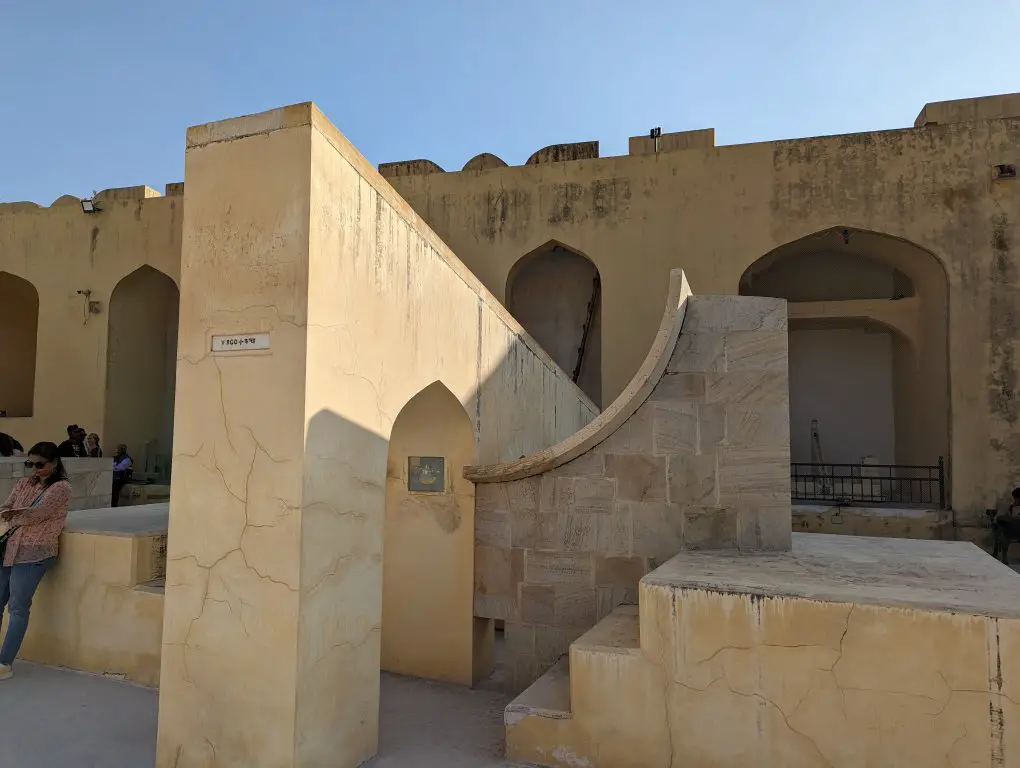
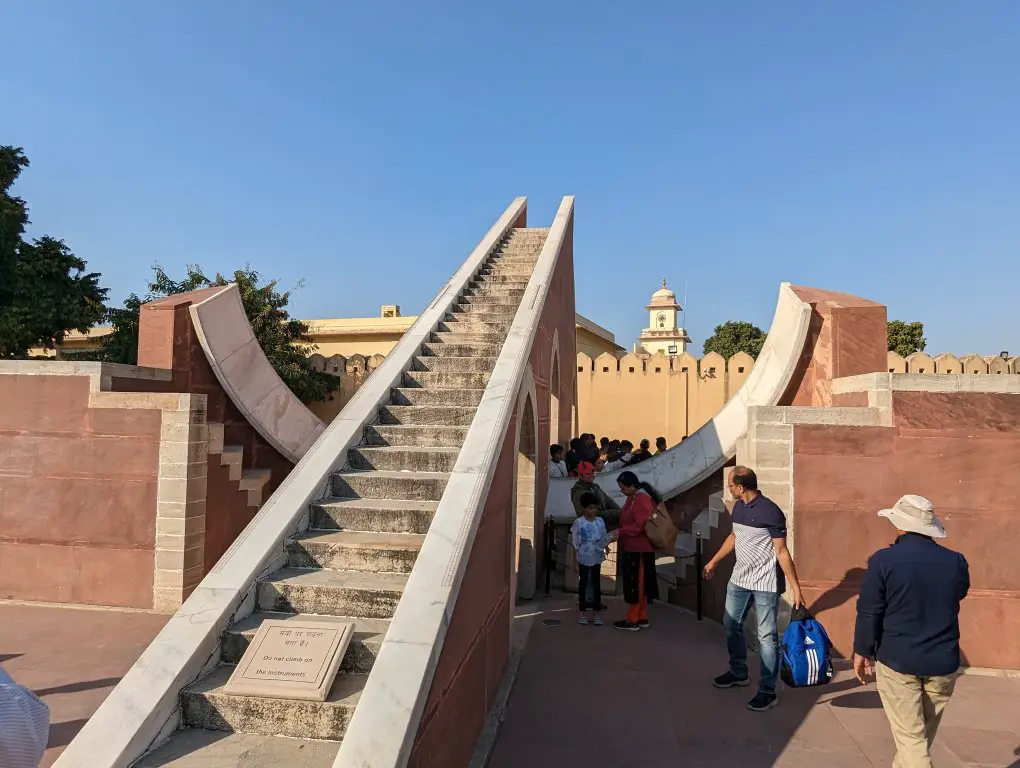
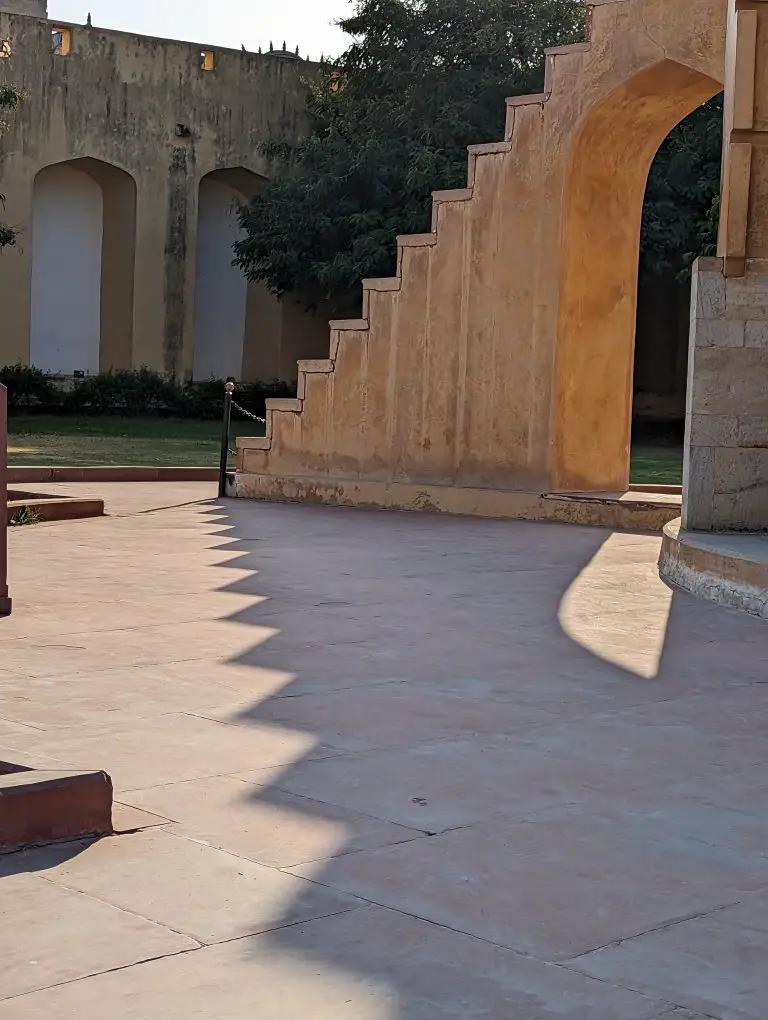
Should I see Jantar Mantar in Jaipur?
Today we look at these innovations and see a set of oddly shaped stones set up in an organized fashion.
For me, learning the history and the purpose behind each of these astrological devices in Jaipur’s Jantar Mantar was interesting.
Conversely, my wife who is not as interested in ancient sciences found it to be very dull and boring and would recommend skipping it.
Should I got to Jantar Mantar in Jaipur?
So to help you decide if you should stop there I present the following questions.
- Do you have a knowlegable tour guide with you?
- Without someone to tell you how each of these structures/devices were used to measure the stars and provide information, you will not get any benefit out of it
- How much to you want to learn about measuring time and celestial body movements using these ancient technology innovations?
- If you understand what a sundial is and you feel that is enough, then maybe skip this!
- Do you have a curiosity as to what each of these objects measure?
- Even if you don’t care much about astrology and you don’t care much about science, do you still have the curiosity as to why these structures were made? Then go see it!
What did Jaipur’s Jantar Mantar measure?
The goals of Jantar Mantars large set of ancient devices were to measure time – whether that is days, months seasons or years and various astronomical phenomena. Each structure was built using the principals of geometry, trigonometry and a massive understanding of celestial body movements and mechanics. Setting up each of these unique devices would have been a task for a master astrologist, which makes it all the more interesting.
Think about it. This was the cutting edge science at the time and contributed widely to the scientific knowledge and engineering skills of the astronomers and highlights the vast information.
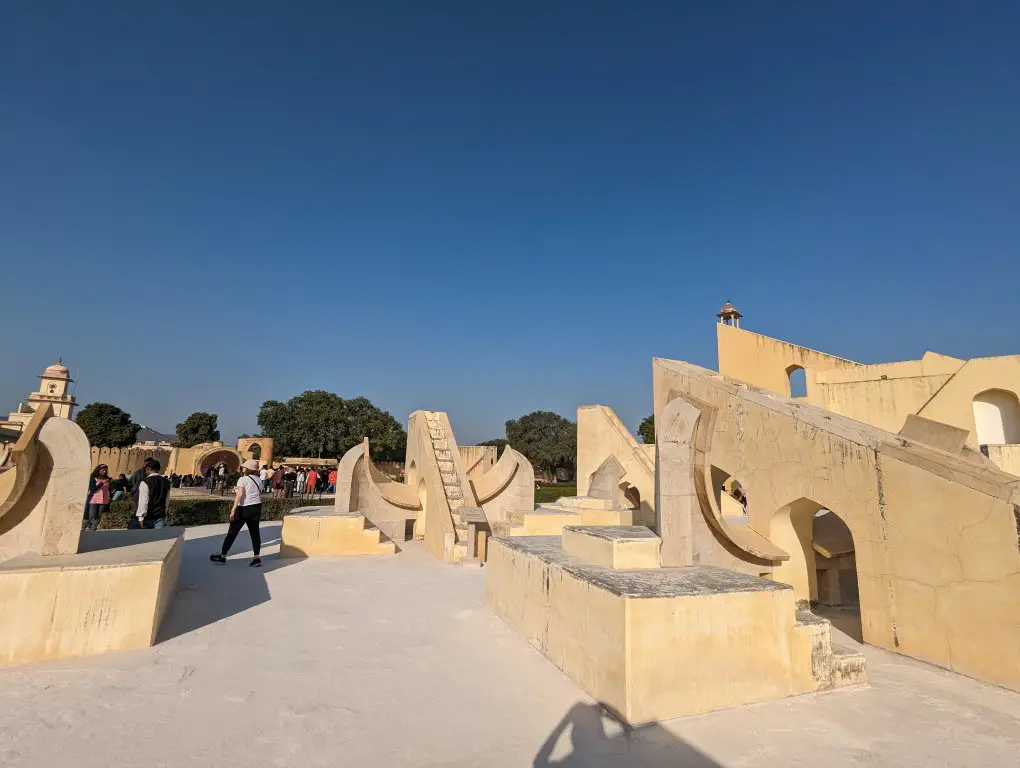
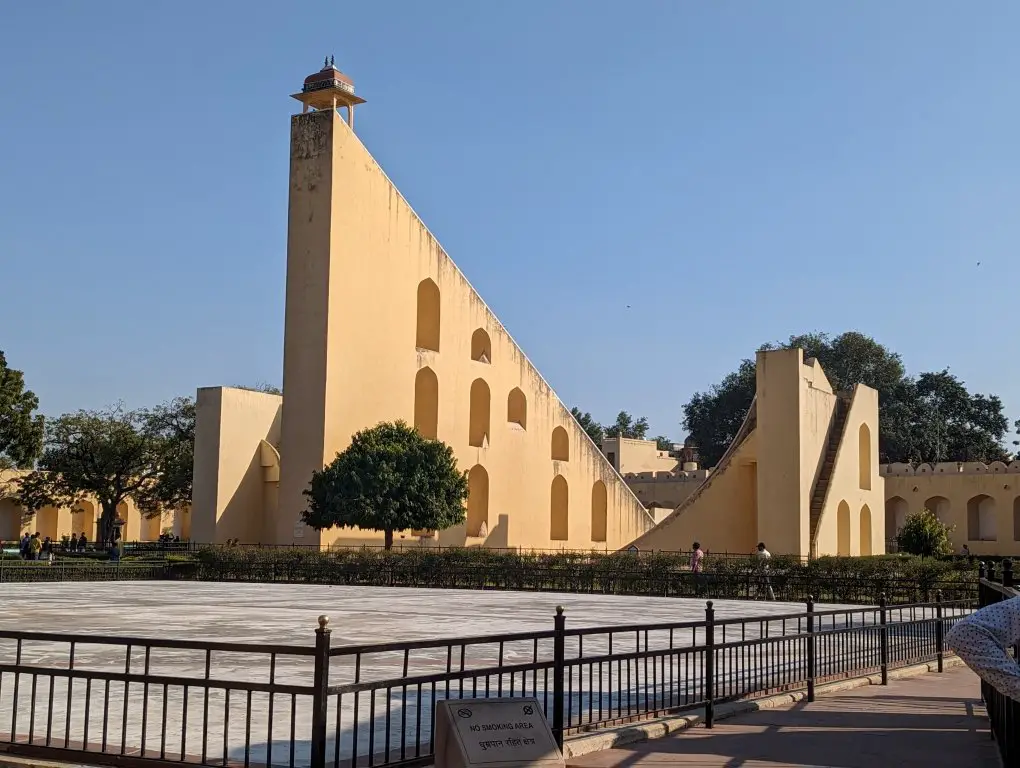
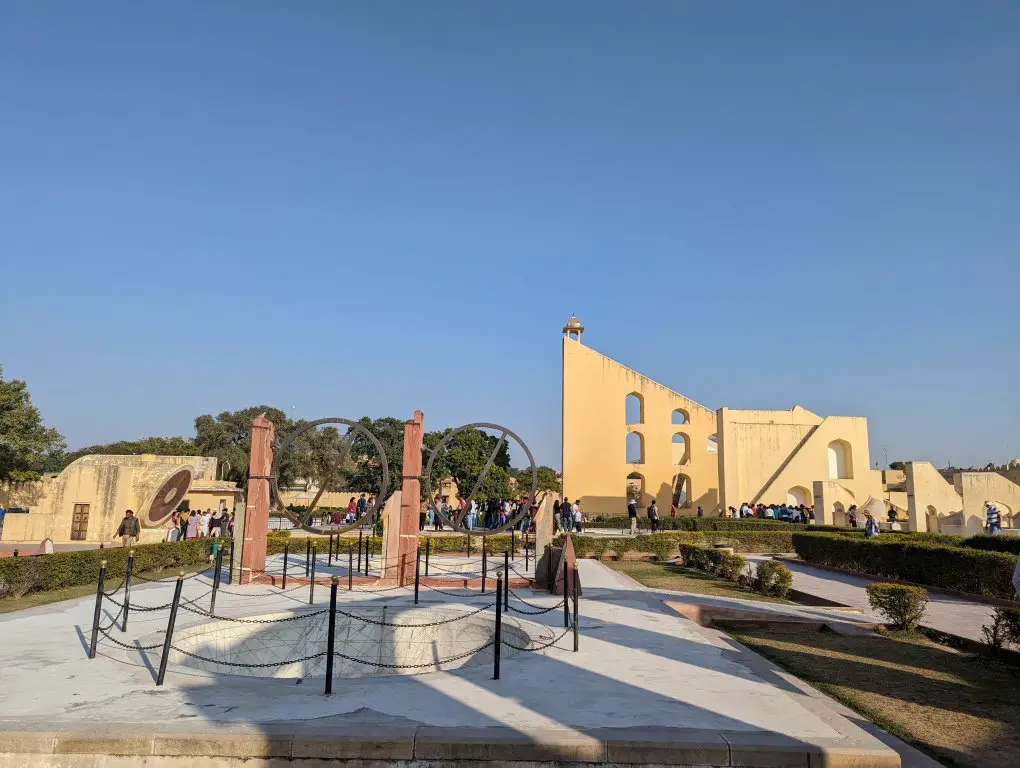
What instruments are in Jaipur’s Jantar Mantar?
There are 19 instruments to be seen, but I will only cover a few of them here to give you a taste of the intelligence put into these scientific instruments.
The “Samrat Yantra” is a giant sundial designed to accurately measures solar time using design principles of Ptolemaic and Islamic astronomical masters, with an accuracy to the second. It has a triangular rod sticking up from the ground to cast a shadow onto an area that is marked and labelled. The time is well defined by where the shadow falls. This triangular rod is aligned with the celestial north and is even modified to the unique latitude and longitude of Jaipur.
The Jayaprakash Yantra consists of a series of concave hemispheres with holes in it, made from stone. Its purpose is to track celestial bodies such as stars, planets and the moon. People would line their sight up through the various holes to observe the various celestial bodies as they move throughout the year.
All of the tools created at Jantar Mantar in Jaipur are intended to help enhance and confirm these measurements.
Conclusion: Jantar Mantar
If you love science, this Jantar Mantar is a must stop, but if you don’t care that much about it, then it is skippable! Just make sure that you enjoy yourself out there!

